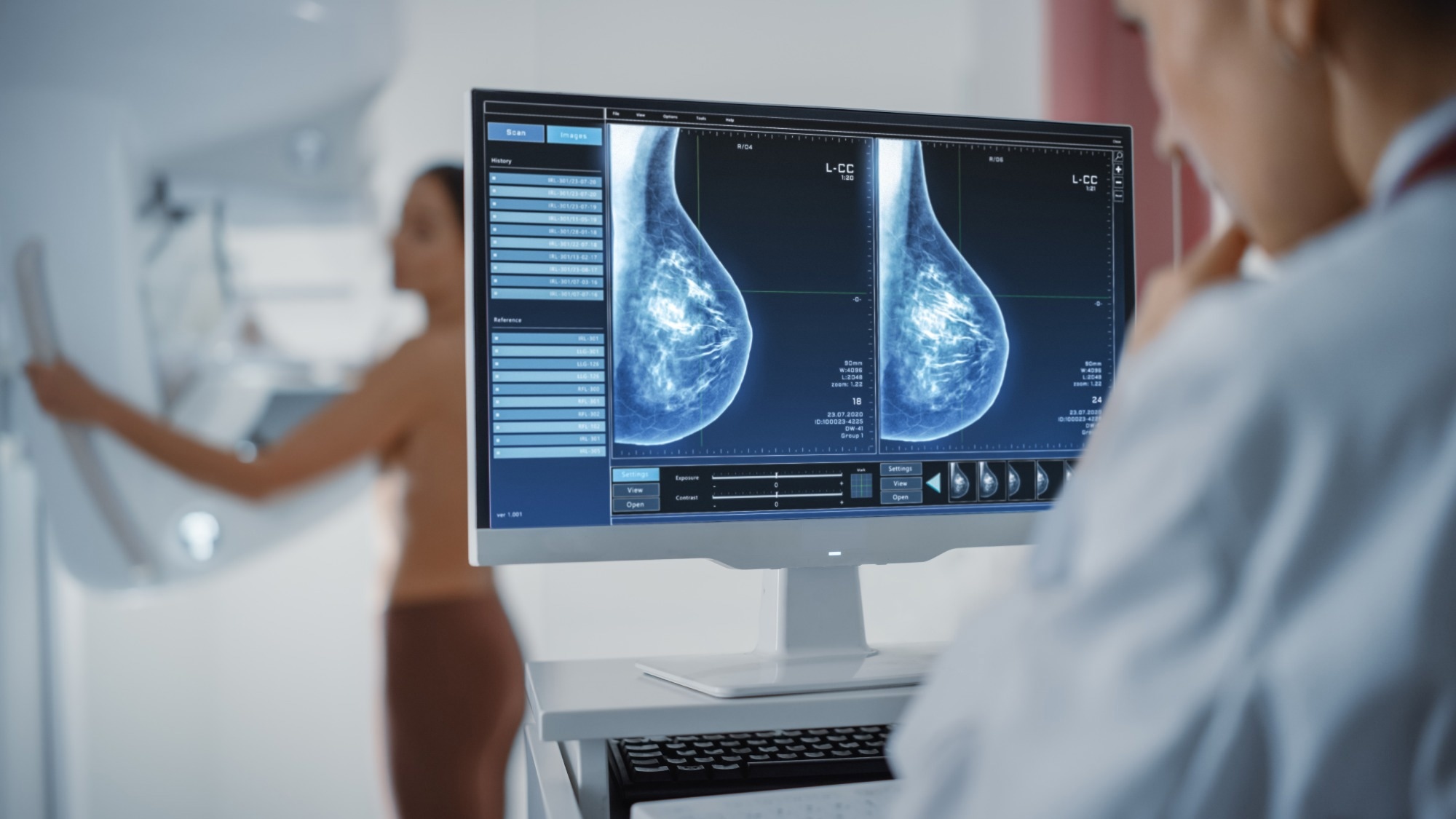In breast cancer, the focal amplification of oncogenes plays a critical role in oncogenesis. A recent study published in Nature used whole-genome sequencing (WGS), RNA sequencing, and epigenomic data to identify the underlying mechanism associated with the initiation of focal amplification in breast cancer.
 Study: ERα-associated translocations underlie oncogene amplifications in breast cancer. Image Credit: Gorodenkoff/Shutterstock.com
Study: ERα-associated translocations underlie oncogene amplifications in breast cancer. Image Credit: Gorodenkoff/Shutterstock.com
Background
Copy-number amplification is a common route of oncogene activation in cancer cases. Previous studies have indicated that cancer cells can adopt varied pathways to acquire high-level copy-number amplification.
In certain cases, the oncogenes are linearly amplified after a single DNA double-strand break (DSB) undergoes the breakage–fusion–bridge (BFB) cycle.
This cycle is associated with DNA replication, dicentric chromosome bridge formation, sister chromatid fusion, and chromosome breakage, which promotes another DNA breakage.
A recent study indicated that high-level amplifications can originate from chromothripsis. The formation of extrachromosomal circular DNAs (cDNAs) comes with the possibility of chromothripsis, which is linked with massive chromosomal fragmentation and rearrangement.
Many times, BFB cycles and chromothripsis are intertwined because the latter can generate DNA breaks that trigger BFBs. Also, the BFB cycle can precipitate chromothripsis.
Breast cancer oncogenes, such as HER2 (also known as ERBB2) and cyclin D1 (CCND1) undergo focal amplification. The activation of these genes defines the clinically relevant subgroups.
In breast cancer, focal amplifications occur in the early phase of the oncogenesis which leads to the transition from atypical ductal hyperplasia to ductal carcinoma.
In some cases, focal amplifications occurred in the late phase of breast oncogenesis or during treatment. These findings indicate an ongoing mutational process in cancer cells.
Not many studies are available that elucidate the initial mutational events that cause focal oncogene amplifications. In addition, there is a scarcity of research that elucidates how the cells of origin acquire the amplicons or whether this mechanism is linked with risk factors for breast cancer manifestation.
About the study
The present study has merged five breast cancer whole genome sequencing (WGS) datasets obtained from public repositories, namely, the International Cancer Genome Consortium (ICGC) French cohort, the Pan-Cancer Analysis of Whole Genomes (PCAWG) consortium, the Sanger cohort, the British Columbia cohort, and the Yale study.
In total, a 780-patient cohort was analyzed in this study. All data was reprocessed and a uniform set of variant calling methods was applied. Bioinformatic tools, such as Bazam, Picard, SAGE, CHORD, and Samtools, were used in this study.
The current study defined an amplicon as a genomic segment whose absolute copy number exceeds more than three times the baseline copy number of the chromosome arm.
Study findings
Previous studies have indicated that exposure to estrogen, particularly the time and duration of exposure during menstruation and pregnancy, is a major risk factor for breast cancer development.
Pharmacologic inhibition of estrogen has significantly reduced the frequency of breast cancer among the vulnerable group.
Estrogen regulates key transcriptional factors of mammary epithelial tissues. It promotes cell proliferation and prevents apoptosis. Furthermore, this study revealed that estrogen affects the genome structure directly and influences oncogenesis through translocation–bridge (TB) amplification.
The authors observed that extreme copy-number events, such as focal amplifications, could be used as negative selection.
The current study observed that in some prostate cancer cases, a genomic footprint of chromosome bridge formation occurred without focal amplifications. In these instances, the broken bridge would have been stabilized without causing high-level amplification.
In the case of breast cancer, TB amplification occurred in already-aneuploid breast cells that could contain driver point mutations. In addition, E2–ERα antagonizes the p53-induced apoptosis in breast cancer cells. These conditions could aid in focal oncogene amplifications.
Pan-cancer analysis revealed that TB amplification is a common occurrence in other cancer types as well. However, this event is found more in women than in men. DNase I hypersensitivity was identified to be a significant predictor of amplification boundary hotspots in breast cancer.
It can indicate the origin of TB amplification in other cancer types as well. Several estrogen-responsive genes, such as CCND1 and RARA, have a vital function in many tissues and their chromatin structure indicates local fragility.
Differential tissue preferences were observed, for example, some tissues favored DSB repair with sister chromatids via classical BFB, while others fancied inter-chromosomal translocation as an initial step for focal amplification.
This differentiation could be due to the varied cell cycle phase during DNA end-joining events for chromosomal breakages.
Conclusions
Particularly for breast cancer, TB amplification was identified to be a mutational process linked to focal oncogene amplification. Notably, inter-chromosomal translocation was found to be the most common source of bridges in multiple cancer types, including breast cancer.
This study indicated that estrogen-induced DNA breaks are a key factor in breast cancer cases.

